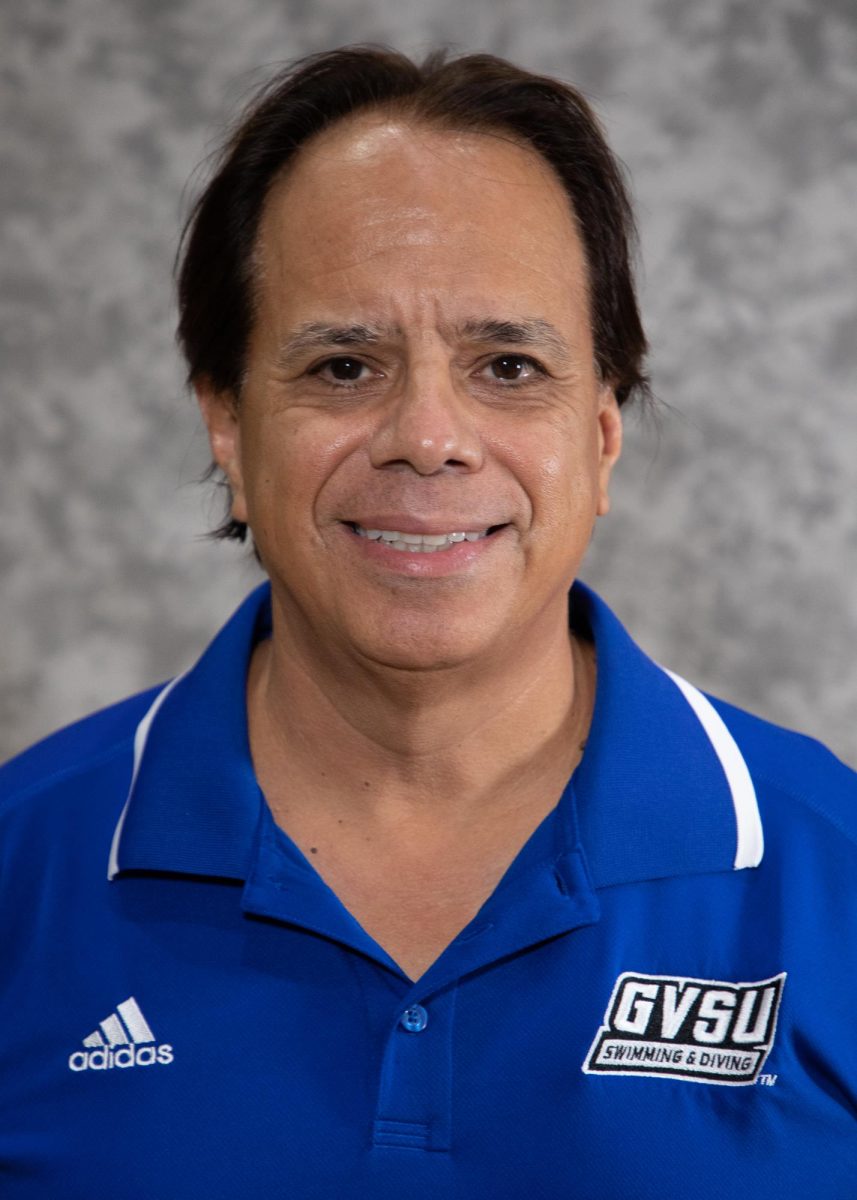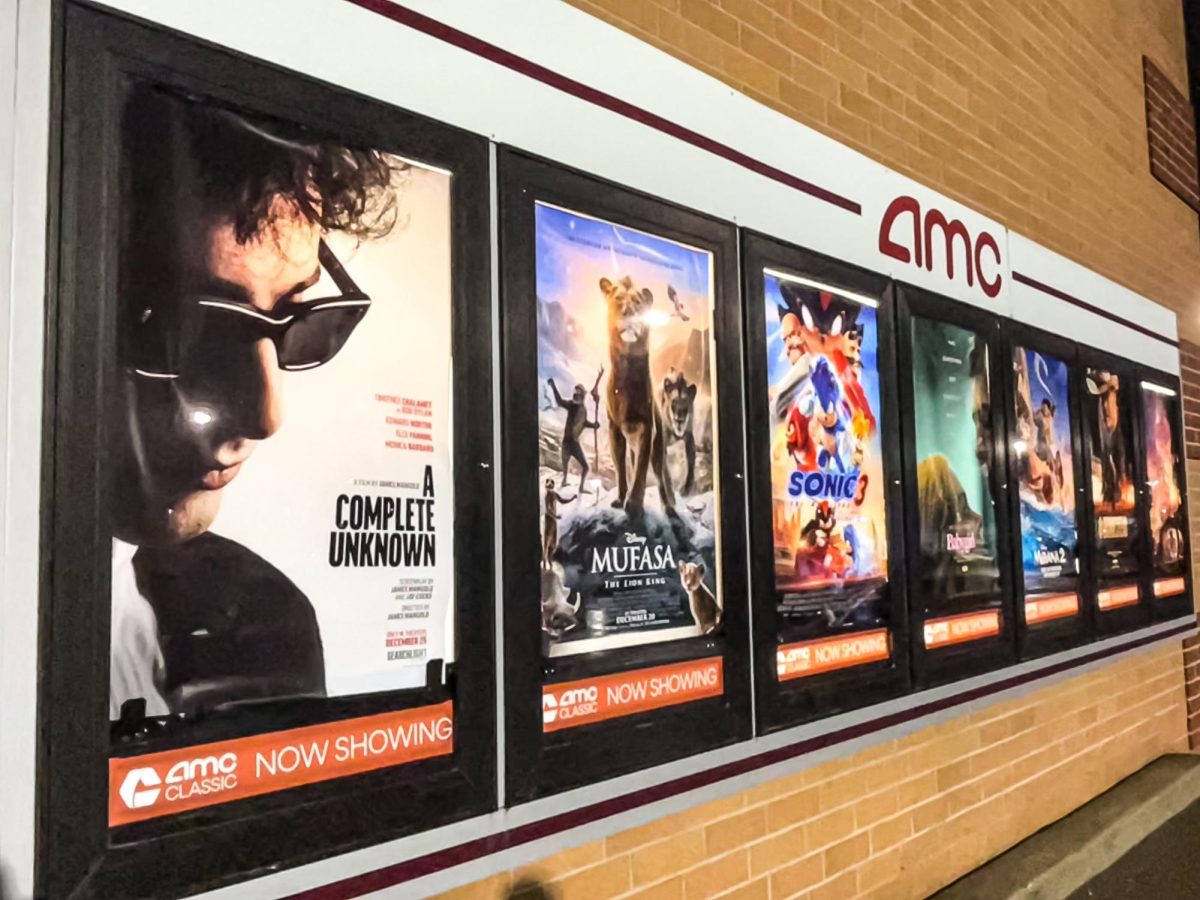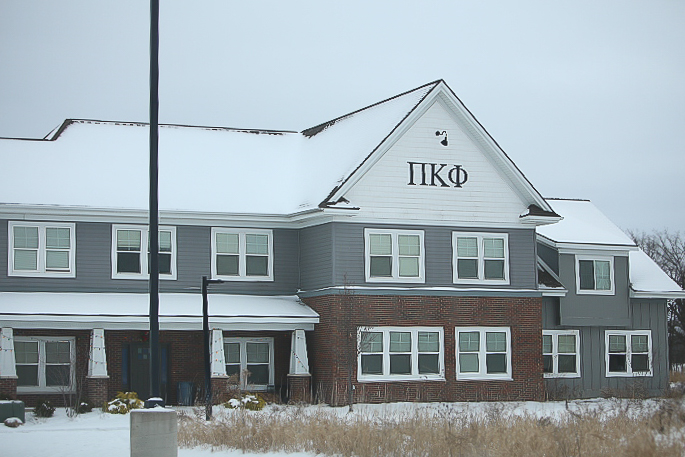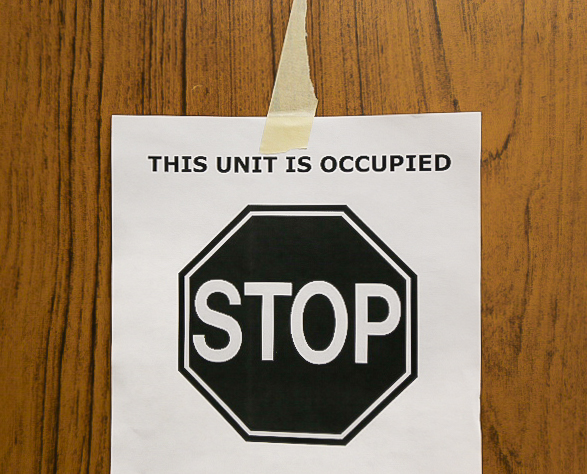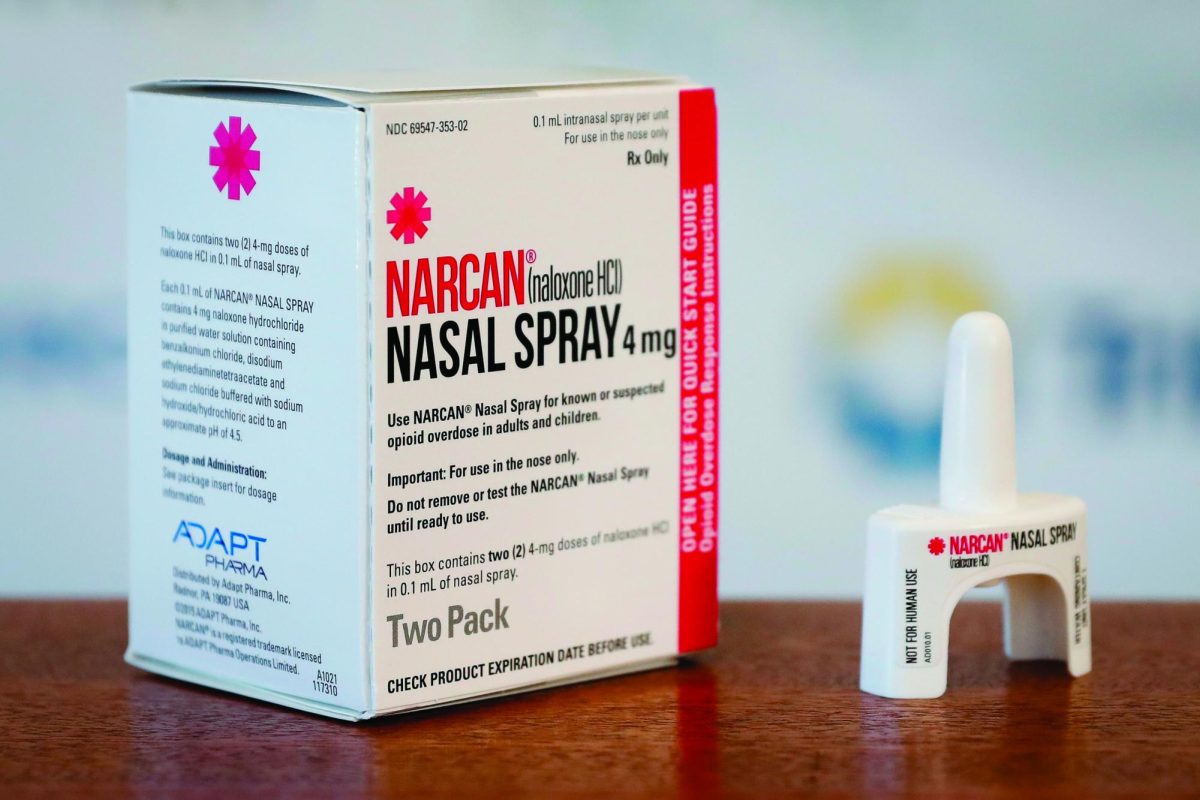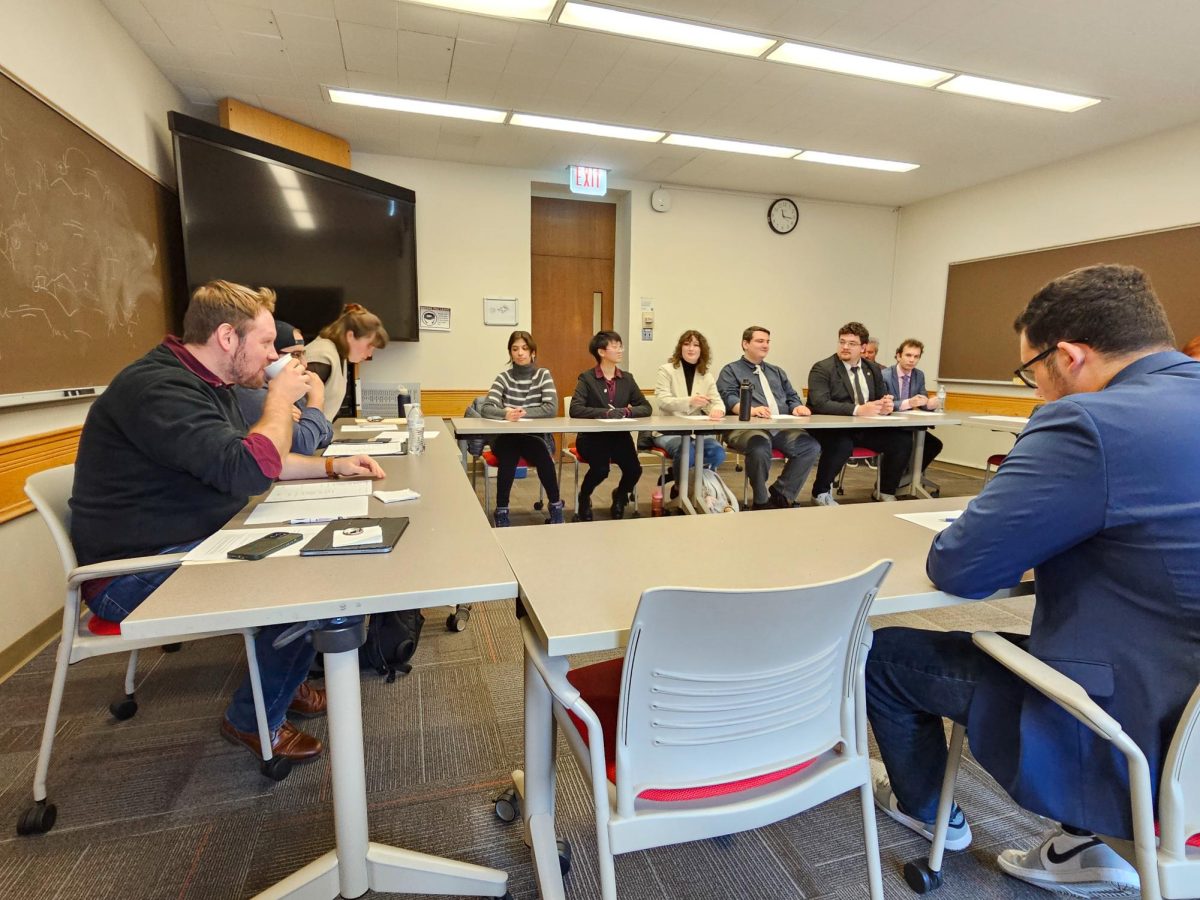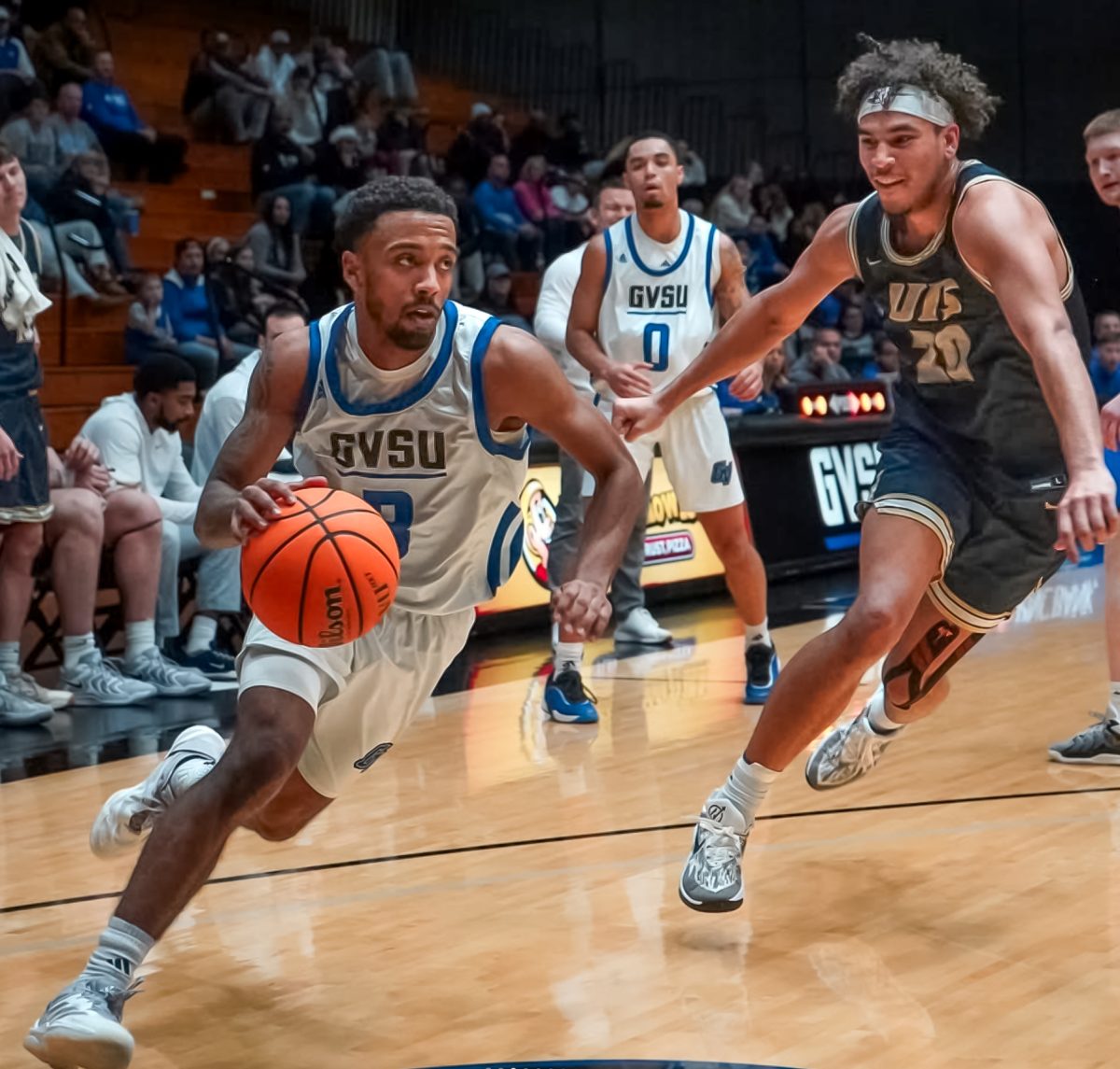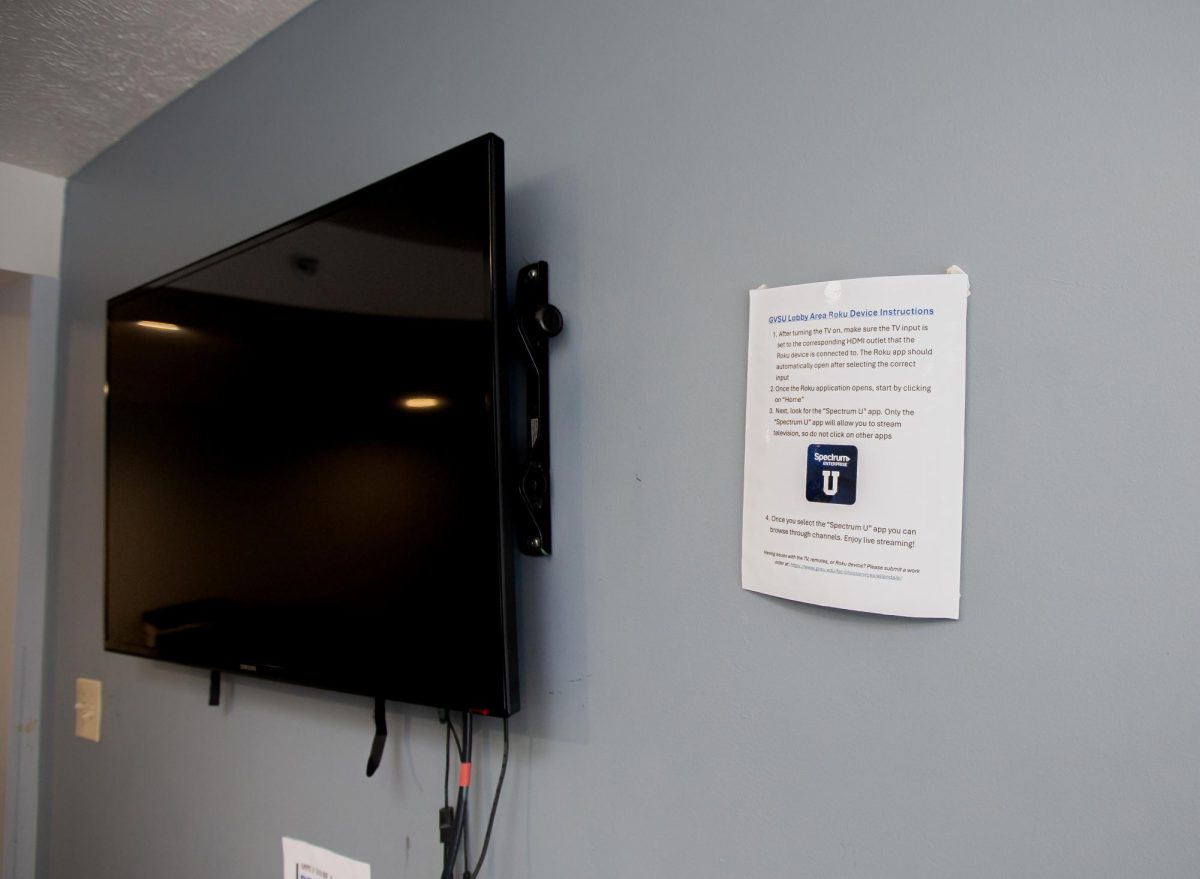Graduate student shares family connection to Titanic
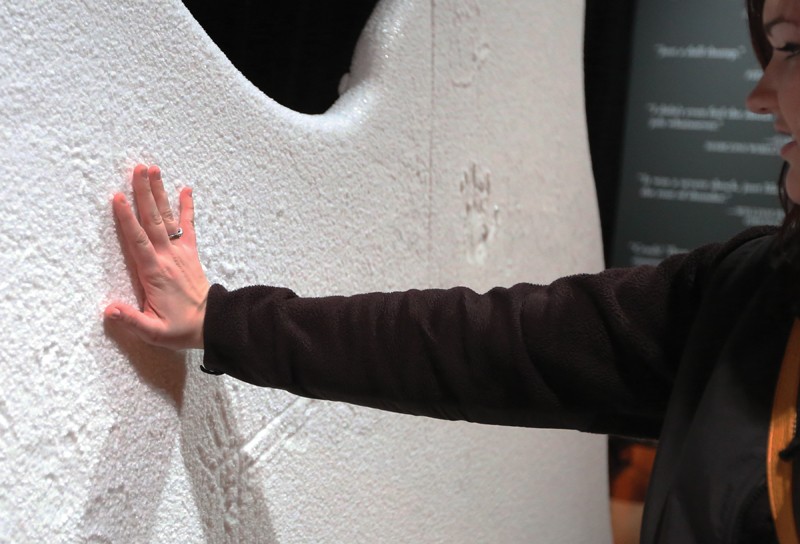
GVL / Robert Mathews An iceberg on display at the “Titanic, the Artifact Exhibition” at the Public Museum in Grand Rapids.
Feb 14, 2013
On April 14, 1912 the Titanic struck an iceberg and did exactly what everyone said it couldn’t – sink, claiming more than 1,500 lives.
More than 100 years later, the sinking remains to be one of the world’s most devastating and fascinating shipwrecks. The stories from that cold night continue to live on, depicted through Hollywood films, grim underwater footage and the latest exhibit at the Grand Rapids Public Museum, “Titanic: The Artifact Exhibition.”
But for Kelley Senkowski, a Grand Valley State University graduate student, the exhibit means more than just learning about the ship’s history and viewing the more than 150 preserved artifacts. She grew up learning about her great-grandmother, Jessie Trout’s survival story, but has never really shared it publically, until now.
“I figured no one really cared,” Senkowski said. “Up until then, our family’s never really told it, it’s just kind of a story in our family.”
Trout, a 26-year-old widow traveled from the U.S. to her home country of Scotland, and later London to visit relatives, after the death of her husband. With a first class ticket purchased for the Oceanic, which didn’t set sail for two months, Trout was able to upgrade for a $7 fee to a second-class ticket on the Titanic.
Trout’s family had no idea she had been on the Titanic, until she showed up to her home in Columbus, Ohio several days after the sinking. When she returned, she recounted her story to several newspapers, but then rarely discussed it after with her family.
“It was 15 minutes to 12 o’clock Sunday night when we struck the iceberg,” Trout said to a Columbus Citizen reporter for the April 22, 1912 issue. “I was awakened and looked out and saw the iceberg passing. You have seen the roots of a big double tooth that has been pulled. Well, that’s about the best description I can give of the iceberg which was right near the Titanic.”
Shortly after the collision, Trout was told to return to her cabin and remain calm. Much like depicted in the Hollywood film, passengers were unaware of how serious the situation was, until it was too late.
“I did not realize we were in any danger until about 12:30 when the purser of the second cabin told us to put on life preservers and go to the boat deck,” Trout said to the Columbus Citizen. “After I went up to the boat deck I went back down to my berth to get my bracelet and my backcomb. I only had my night clothes and top coat on. When I came back up on the boat deck I was grabbed by a seaman and placed in lifeboat No. 9. It was next to the last boat put out. There were about 40 women and children and two young men passengers and six seamen on that lifeboat.”
Although Trout’s lifeboat saw the Carpathia shortly after 3 a.m., it took several hours until they were rescued.
“We were probably half a mile from the Titanic when she went down,” Trout said. “It was a terrible sight. Not until 7 o’clock in the morning were we picked up by the Carpathia. It was terribly cold but the women, although lightly dressed, seemed to stand it better than the men. The women also seemed more composed on the Titanic than the men.”
Senkowski shared her great-grandmother’s story at the member-only preview on Feb. 8, before the exhibit opened to the public Feb. 9, and will speak again at the Feb. 21 at the museum’s fundraising event.
“I just want to honor her story,” Senkowski said. “I’ve written to an author to give him her name and the picture and I just want to honor her life and her story so that can be told as part of the whole Titanic story.”
She was excited for her five children to see the exhibit for the first time in more than seven years, which has new artifacts, a simulated iceberg to touch and an interactive element.
“It always bothered them that her information was never included in anything – any books, any stories told about it – so I think they’re excited to put her back as a part of it so people know her story,” Senkowski said.
When entering the exhibit, which runs until July 7, viewers are handed a gender-coded “boarding pass,” which includes the name and information of a real passenger. At the end, a commemorative wall lists all of the Titanic’s passengers and viewers can find out if they would have survived.
“It’s kinda those kind of feelings where you know people experienced this,” She said. “Like 911, you know actual people went through it, it’s not just a story, it’s not just a movie, they lived it. That’s very powerful in an exhibit.”
For museum hours and special tours, or to purchase tickets, go to www.grmuseum.org.




